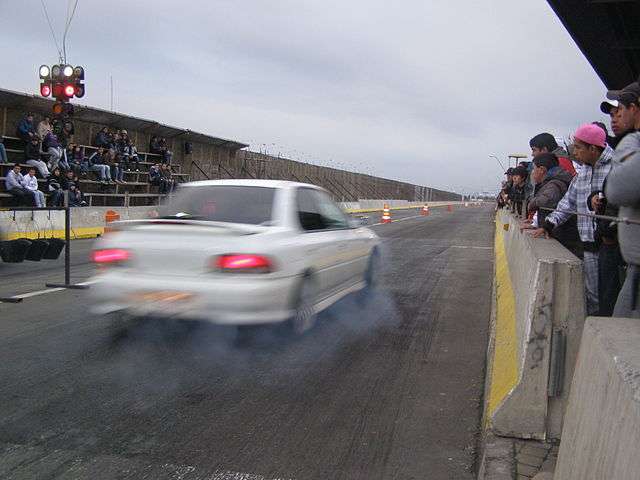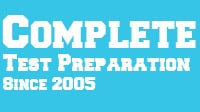
Speed and Acceleration Tutorial and Practice Questions
- Posted by Brian Stocker MA
- Date April 6, 2014
- Comments 11 comments
Acceleration – Quick Tutorial
In physics, acceleration is the rate at which the velocity of a body changes with time. For example, an object such as a car that starts from a full stop, then travels in a straight line at increasing speed, is accelerating in the direction of travel. If the car changes direction at constant speed, there is strictly speaking an acceleration, although not described as such; passengers in the car will experience a force pushing them back into their seats in linear acceleration, and a sideways force on changing direction. If the speed of the car decreases, or decelerates, mathematically it is acceleration in the opposite direction.
The formula for acceleration = A = (Vf – V0)/t and is measured in meters per second2. Here is a typical question:
A car starts from standing top and in 10 seconds is travelling 20/meters per second. What is the acceleration?
a. 0.5 m/sec2
b. 1.5 m/sec2
c. 1 m/sec2
d. 2 m/sec2
The formula for acceleration = A = (Vf – V0)/t
so A = (20 m/sec – 0 m/sec)/10 sec = 2 m/sec2
Speed
Speed is the rate of change of an objects position, or,
speed = (total distance traveled)/(total time taken).
Here is a typical question:
A rocket travels 3000 meters in 5 seconds. How fast is it travelling?
a. 100 m/sec
b. 200 m/sec
c. 500 m/sec
d. 600 m/sec
Answer: D
speed = (total distance traveled)/(total time taken)
3000/5 = 600 meters per second.
Practice Questions
1. A car starts from a full top and in 20 seconds is travelling 10/m per second. What is the acceleration?
a. 0.5 m/sec2
b. 0.24 m/sec2
c. 1 m/sec2
d. 1.5 m/sec2
2. A motorcycle travelling 90 mph accelerates to pass a truck. Five seconds later the car is going 120 mph. Calculate the acceleration.
a. 6 mph/second
b. 10 mph/second
c. 15 mph/second
d. 20 mph/second
3. A rocket releases a satellite into orbit around Earth. The satellite travels at 2000 m/s in 25 seconds. What is the acceleration?
a. 60 m/sec2
b. 80 m/sec2
c. 100 m/sec2
d. 120 m/sec2
4. A soccer ball is kicked and travels at a velocity of 12 m/sec. After 60 seconds, it comes to a stop. What is the acceleration?
a. -0.2 m/sec2
b. 0.2 m/sec2
c. 1 m/sec2
d. 0.5 m/sec2
Speed
Speed is the rate of change of an objects position, or,
speed = (total distance traveled)/(total time taken).
Here is a typical question:
A rocket travels 3000 meters in 5 seconds. How fast is it travelling?
a. 100 m/sec
b. 200 m/sec
c. 500 m/sec
d. 600 m/sec
speed = (total distance traveled)/(total time taken)
3000/5 = 600 meters per second.
Common Mistakes to Avoid Answering Acceleration Questions
Misunderstanding acceleration. Don’t confuse acceleration with velocity or speed. Acceleration is the rate of change of velocity, not the velocity itself.
Incorrect unit conversions. Acceleration is measured in meters per second squared (m/s²). Watch your units and make sure they are consistent.
Confusing positive and negative acceleration. Acceleration can be positive, speeding up, or negative, slowing down.
Remember the initial velocity. Some acceleration questions involve objects starting at a certain velocity. Don’t forget to consider the initial velocity in your calculations.
Practice Questions
5. The space station travels 1000 meters in 5 seconds. How fast is it travelling?
a. 100 meters/second
b. 200 meters/second
c. 50 meters/second
d. 500 meters/second
6. A runner can sprint 6 meters per second. How far will she travel in 2 minutes?
a. 600 meters
b. 720 meters
c. 760 meters
d. 800 meters
7. How far can a person walk if they travels 1000 m in 20 minutes?
a. 25 meters
b. 50 meters
c. 100 meters
d. None of the above
Answer Key
1. A
The formula for acceleration = A = (Vf – V0)/t
so A = (10 m/sec – 0 m/sec)/20 sec = 0.5 m/sec2
2. A
The formula for acceleration = A = (Vf – V0)/t so A = (120 -90)/5 sec = 6 mph/second
3. B
The formula for acceleration = A = (Vf – V0)/t
so A = (2000 – 0)/25 sec = 80 m/sec2
4. A
The formula for acceleration = A = (Vf – V0)/t so A = (0 – 12)/60 sec = -0.2 m/sec2
5. B
Speed = (total distance traveled)/(total time taken)
1000/5 = 200 meters per second
6. B
Speed = (total distance traveled)/(total time taken)
6 = x/120 (convert minutes to seconds)
6 * 120 = x
X = 720 meters
7. B
Speed = (total distance traveled)/(total time taken)
X = 1000m/20 minutes
X = 50 meters
Date Published: Sunday, April 6th, 2014
Date Modified: Thursday, July 20th, 2023
Tag:Acceleration, Force, Practice Questions, Speed
You may also like

Listening Comprehension Practice – Solving a Problem


11 Comments
really good, this helped me doing my science exam(:
really helpful! please more
A rocket travels 3000 meters in 5 seconds. How fast is it travelling?
a. 100 m/sec
b. 200 m/sec
c. 500 m/sec
d. 600 m/sec
Answer: C
speed = (total distance traveled)/(total time taken)
3000/5 = 600 meters per second.
for the above equation sample, I believe the Answer should be D and not C
Can you explain #4?
Well it is given that the football was initially travelling at a rate of 12m/s. So, v0=12m/s
After 60 seconds it comes to a stop, which means that its velocity becomes =0m/s
and we know time is 60 seconds. So
acceleration=(0m/s-12m/s)/60 sec=-12/60=-0.2m/s^2
Therefore, acceleration is -0.2m/s and the negative sign indicates that the acceleration is opposite to the direction of motion.
Thanks for explanation!
yeah can u xplain number 4..but thank you it helps me
Thanks a lot! helped a lot in doing my physics exams.
Thanks bro that really help me keep uploading more Questions
hi pls xplain #5
This was very helpful and very nice I loved the calculations personally
If I were to rate it o would give it a 5 out of 5